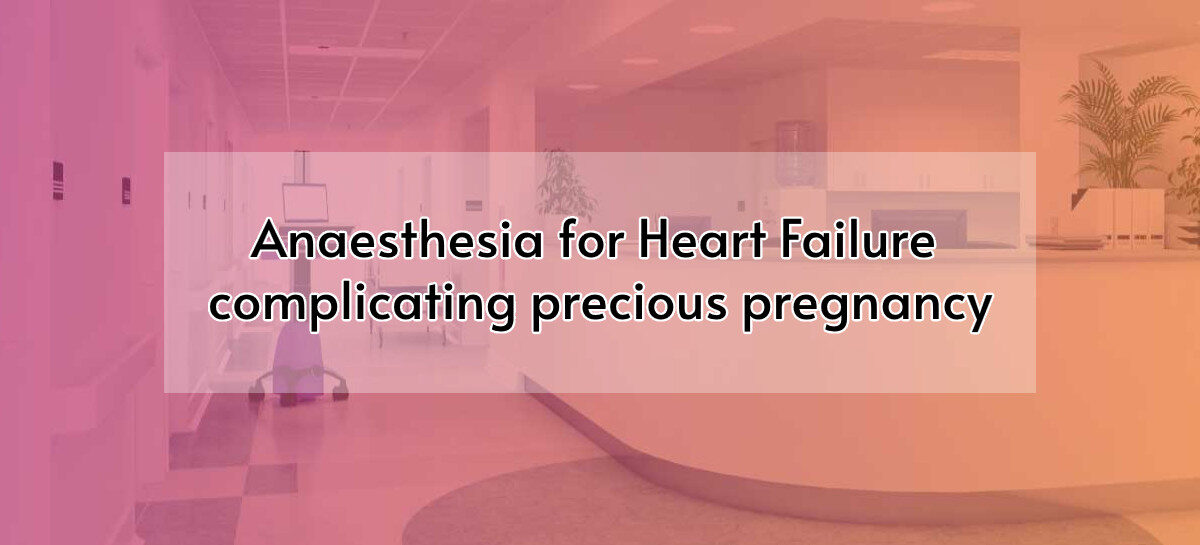We present an interesting case of peripartum cardiomyopathy successfully managed at our hospital. 41 years old unbooked 32 weeks primi came to our emergency around 5 am with severe breathlessness on rest. Breathlessness for 2 days, generalized edema worsening for past 2weeks but no history of fever and cough, no previous history of any heart disease. She’s not able to lie flat. Patient was diagnosed to have high blood pressure two days back and was prescribed oral anti hypertensive medications. We had a double challenge in front of us, a precious child and a unbooked mother in heart failure who is just in end of second trimester. Patient Pulse rate- 134/ minute, blood pressure -180/110 mm of Hg , RR 32/min. Spo2 – 92 in room air, 96 with 4 litres of face mask oxygen. Lung Ultrasound showed extensive B lines bilaterally and basal pleural effusion.
Echocardiography showed global hypokinesia, Ejection fraction was 25 percent. Mild dilated LA , Moderate PAH (pasp 57mm /Hg). No PE /CLOT. Urine examination revealed albuminuria by dipstick method. Preoperative hemoglobin was 12.6-gram percent. Rest blood parameters were within normal limits. Loading dose of magnesium 4g given in emergency.
Patient was wheeled in for emergency cesarian as she was having severe respiratory distress and high blood pressure, impending eclampsia. When she was shifted to OR table she became more dyspneic, oxygen level started to drop 76% with oxygen .we had to induce her in sitting position as she was extremely tachypneic and coughing. General anesthesia administrated with rapid sequence induction as there was more chance of aspiration- patient was not in fasting. Induced with etomidate- which does not cause myocardial depression or hypotension, labetalol bolus to blunt intubation response, invasive arterial line and central line placed post intubation. Patient had frank pulmonary odema, so her oxygenation level was a tough part to manage. Post intubation endotracheal tube suctioning was required. Bolus dose of furosemide given, started on dobutamine infusion. Patient’s blood pressure was fluctuating, had to switch between drugs to keep her blood pressure within normal range as general anesthesia induces hypotension and at the same time her BP was shooting up eratically.
Post operatively patient sent for elective ventilation under cardiac care unit. She was managed with dobutamine infusion, magnesium infusion, beta blockers, nitroglycerin, intravenous diuretics, low molecular weight heparin, fluid restriction. There were no clinical signs of pulmonary embolism. Her oxygen levels improved and chest became clear. Post operative period was uneventful and patient gradually improved. Echo demonstrate an improvement in ejection fraction to 45% in second post operative day. Pt extubated, hemodynamically stable. Baby and mother doing well.
TOXEMIA OF PREGNANCY
Pre-eclampsia is a risk factor for the development of peripartum cardiomyopathy (PPCM). In PPCM syndrome, there shows signs of heart failure besides left ventricular systolic dysfunction. This becomes evident between the last month of pregnancy and the initial five months postpartum.
Risk factors include elderly mother, undiagnosed hypertension, multiparity, pre-eclampsia and gestational hypertension. Symptoms of PPCM, which include fatigue, edema, and dyspnea, are similar to those for the normal spectrum of peripartumstates and pregnancy co-morbidities such as pulmonary emboliand eclampsia. Therefore, diagnosis is often delayed and the disorder is under recognized, with devastating consequences: Mortality is as high as 20% to 50%.
Peripartum cardiomyopathy is a rare but critical disorder causing heart failure in women in late pregnancy or puerperium.
The definition of PPCM can be summarized under four key points:
1. Cardiac failure during the final month of pregnancy or within five months of delivery phase.
2. Pre-eclampsia
3. Not showing any determinable heart disease prior to the last month of pregnancy and
4. Left ventricular dysfunction (ejection fraction below 45% or decreased shortening fraction)
SUMMING UP
This case article highlights the need for prompt recognition of pre-eclampsia in peripartum cardiomyopathy. The mortality rates are high if the condition goes unrecognized. With proper clinical management and treatment, a good outcome can be achieved with literature reporting nearly half of the women normalizing their ejection fraction within six months. Right from the emergency room, patient was evaluated with all the necessary investigations for an emergency situation. To recall she was an unbooked patient for Dr. Sabeeha T.S obsterician. It was an incredible team work by emergency team, anesthesiologists ,surgeons & operating team and cardiologist, coronary cardiac unit intensivist and staff.

Dr. Mahalakshmi Kaliyamoorthy
Anaesthesiologist
Kauvery Hospital



